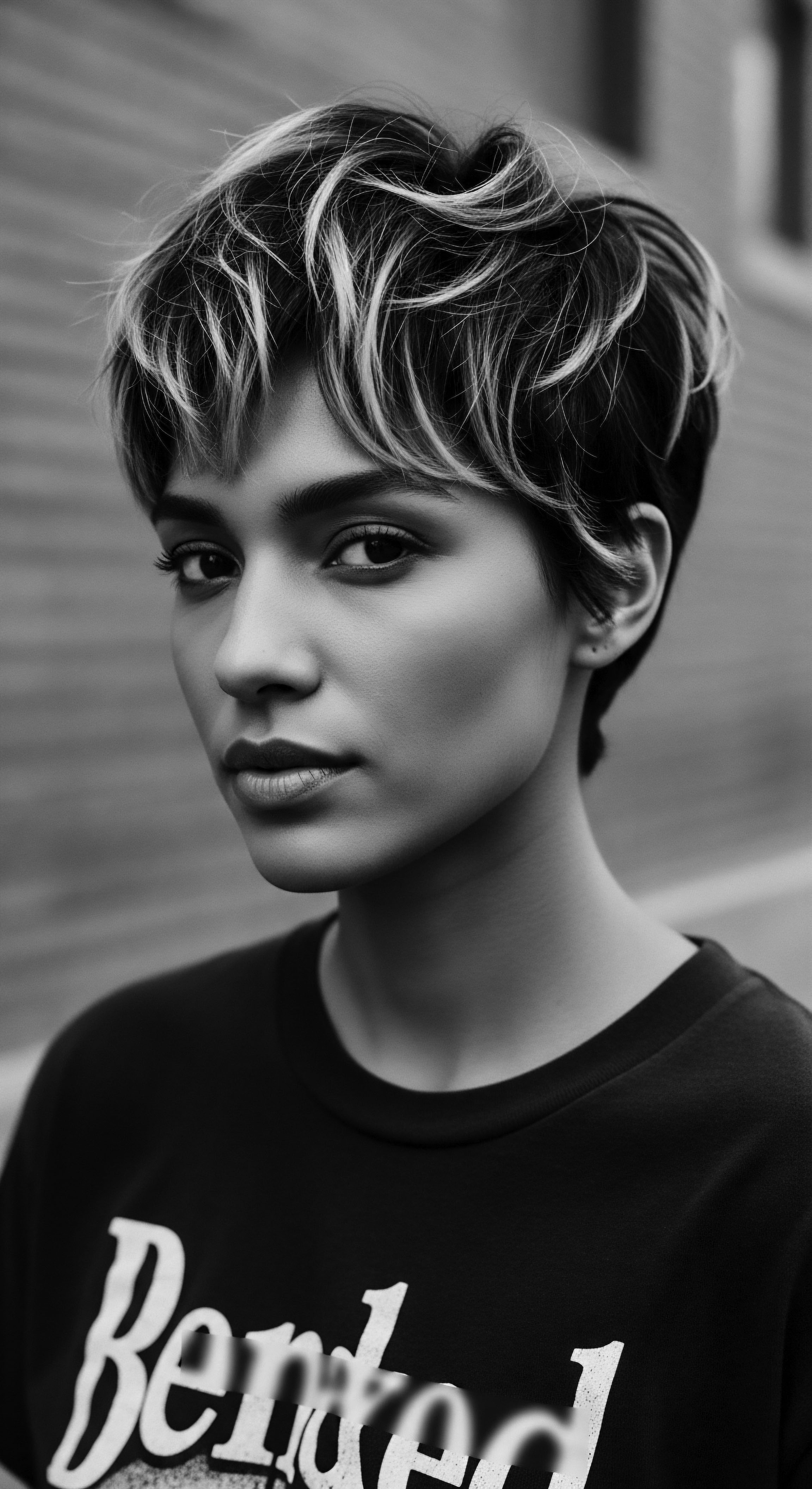
Roots
Consider the strands that crown our heads, a living archive whispered across generations. For those with coils, curls, and waves, this inheritance carries stories—tales not only of biology but of resilience, identity, and profound cultural memory. What is the heritage of textured hair classifications?
The answer rests deep within the very fiber of our beings, a continuum from ancient elemental wisdom to the scientific observations of today, each thread connecting us to a shared past. It is a journey of understanding how ancestral communities, with their keen observations and communal practices, implicitly categorized and honored their diverse hair textures long before modern systems arose.
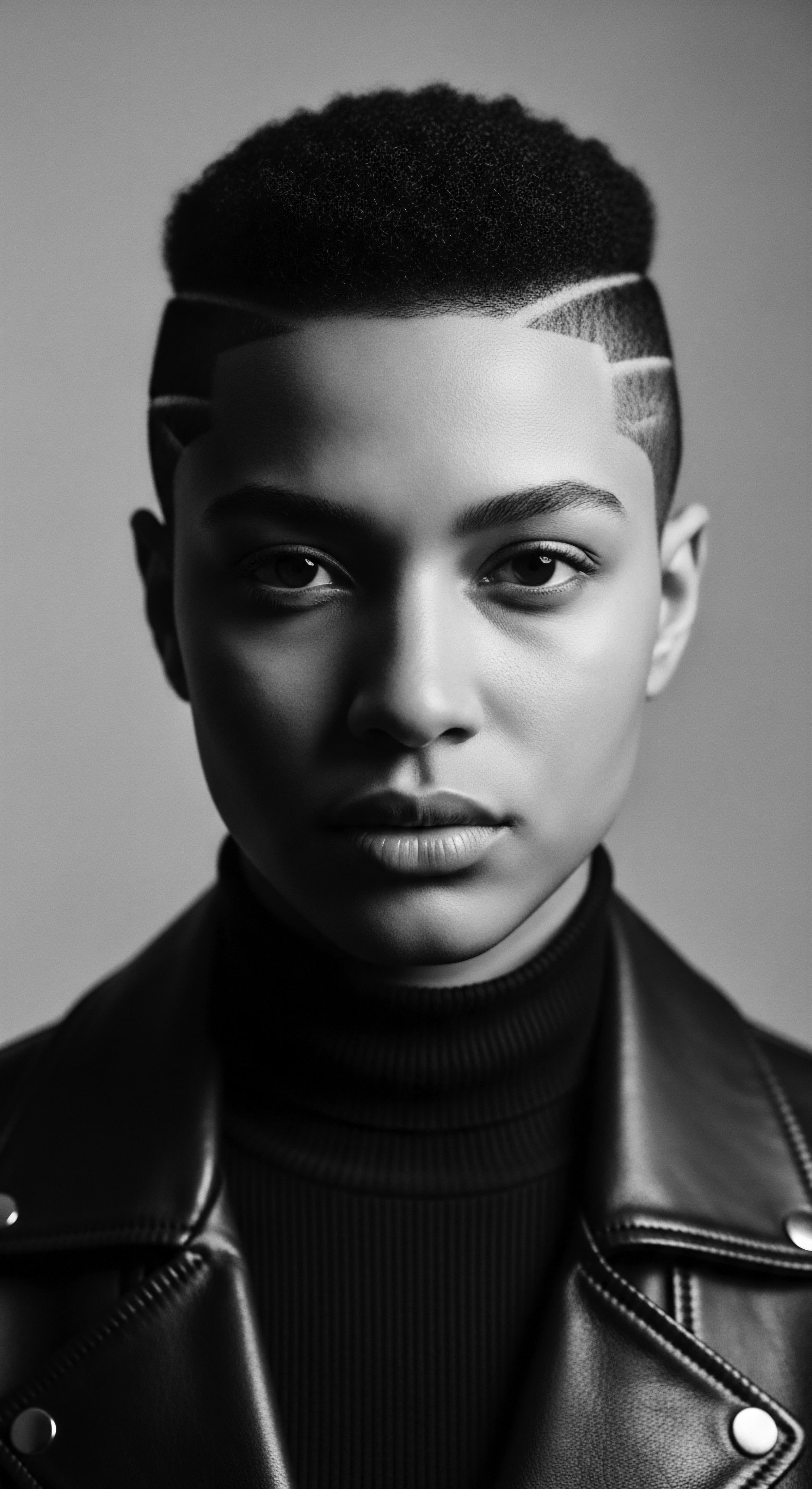
What Does Textured Hair’s Biology Reveal About Its Heritage?
The intricate biology of textured hair distinguishes it from other hair types at a fundamental level. While all human hair emerges from follicles, the elliptical or flattened shape of the follicle for textured hair creates the distinctive curl pattern. This unique morphology shapes the hair shaft itself, leading to varied degrees of curl, from broad waves to tight, spring-like coils (Miyamoto et al. 2021).
The curvature of the hair strand impacts how natural oils, or sebum, travel along its length. Straight hair, with its rounder shaft, allows sebum to coat the strand easily, but for tightly coiled hair, this natural lubrication faces more challenges, explaining why many textured hair types experience a predisposition to dryness. This inherent characteristic is not a flaw, but a biological truth that shaped historical care practices.
In pre-colonial Africa, diverse communities possessed a deep, intuitive understanding of hair’s physical properties. They did not categorize hair in the same rigid, numerical fashion as later Western systems. Instead, their “classifications” were interwoven with social status, spiritual beliefs, geographic origin, and communal identity.
A style could convey marital status, age, or even tribal affiliation. The recognition of different hair types was thus practical and relational, informing how hair was styled, adorned, and cared for, often with natural ingredients found in their immediate environment.
Ancestral hair wisdom predates formal classification, recognizing hair’s diversity through its social and spiritual significance.

How Did Early Systems Categorize Hair Textures?
The formal classification of human hair, particularly in ways that tied directly to racial hierarchies, unfortunately took root during periods of colonialism and scientific racism. In the 19th and early 20th centuries, anthropologists sought to categorize people based on physical traits, including hair texture, often to justify discriminatory ideologies. Eugen Fischer, a German “scientist,” created one of the earliest hair typing systems in 1908, a tool for racial categorization that aimed to determine a person’s proximity to whiteness based on their hair’s characteristics. This era produced terms such as “woolly-haired” to describe Afro-textured hair, dehumanizing terminology that furthered oppressive narratives.
These early, problematic systems stood in stark contrast to the indigenous understandings of hair. While colonial classifications aimed to divide and subordinate, traditional African societies saw hair as a marker of identity and a medium for spiritual connection. For the Yoruba people, for instance, hair occupied the most elevated position on the body, and braided styles served to send messages to the divine. The historical trajectory of hair classification systems, therefore, moves from communal wisdom to scientific prejudice, and ultimately to a contemporary effort to reclaim and redefine these understandings.
- Fischer’s Hair Gauge ❉ An early 20th-century tool designed for racial categorization, linking hair texture to perceived racial purity.
- Martin’s Classification (1928) ❉ A detailed anthropological system dividing hair into categories such as smooth, curly, frizzy, and peppercorn, reflecting a broad spectrum of human hair forms.
- Pencil Test ❉ A discriminatory practice during apartheid in South Africa, used to classify individuals as “Native” or “Colored” based on whether a pencil remained in their hair, illustrating how hair texture was weaponized for segregation.
| Historical Perception/System Pre-Colonial African Hairstyles |
| Underlying Motivation/Context Social status, spiritual connection, tribal identity, age. Hair as a language. |
| Modern Scientific Perspective Recognized as highly diverse, adaptable, and genetically unique, deserving of specialized care rooted in ancestral practices. |
| Historical Perception/System 19th-20th Century Anthropological Classifications |
| Underlying Motivation/Context Racial categorization, justification of hierarchies, often dehumanizing. |
| Modern Scientific Perspective These systems are widely discredited for their racist origins and lack of scientific rigor in representing human diversity beyond superficial traits. |
| Historical Perception/System Andre Walker Hair Typing System (Modern) |
| Underlying Motivation/Context Aimed at product marketing and styling guidance (Type 1-4, A-C subdivisions). |
| Modern Scientific Perspective Offers a descriptive shorthand for texture, yet acknowledges its limitations in fully capturing hair health, porosity, or underlying genetic variations. |
| Historical Perception/System Understanding these classifications through a heritage lens illuminates the shift from deeply symbolic ancestral practices to problematic racial categorizations, and finally to descriptive tools in contemporary hair care. |

Ritual
The legacy of textured hair classifications extends beyond mere anatomical description; it permeates the very rituals of care and styling passed down through families and communities. The hands that braided cornrows, the fingers that applied natural butters, the communal spaces where hair was dressed—these were all informed by an implicit, ancestral understanding of varying hair textures and their needs. What is the heritage of textured hair classifications in shaping styling practices? It appears in the continuity of methods, from ancient protective styles to modern techniques, all aiming to honor and maintain the health of naturally diverse strands.
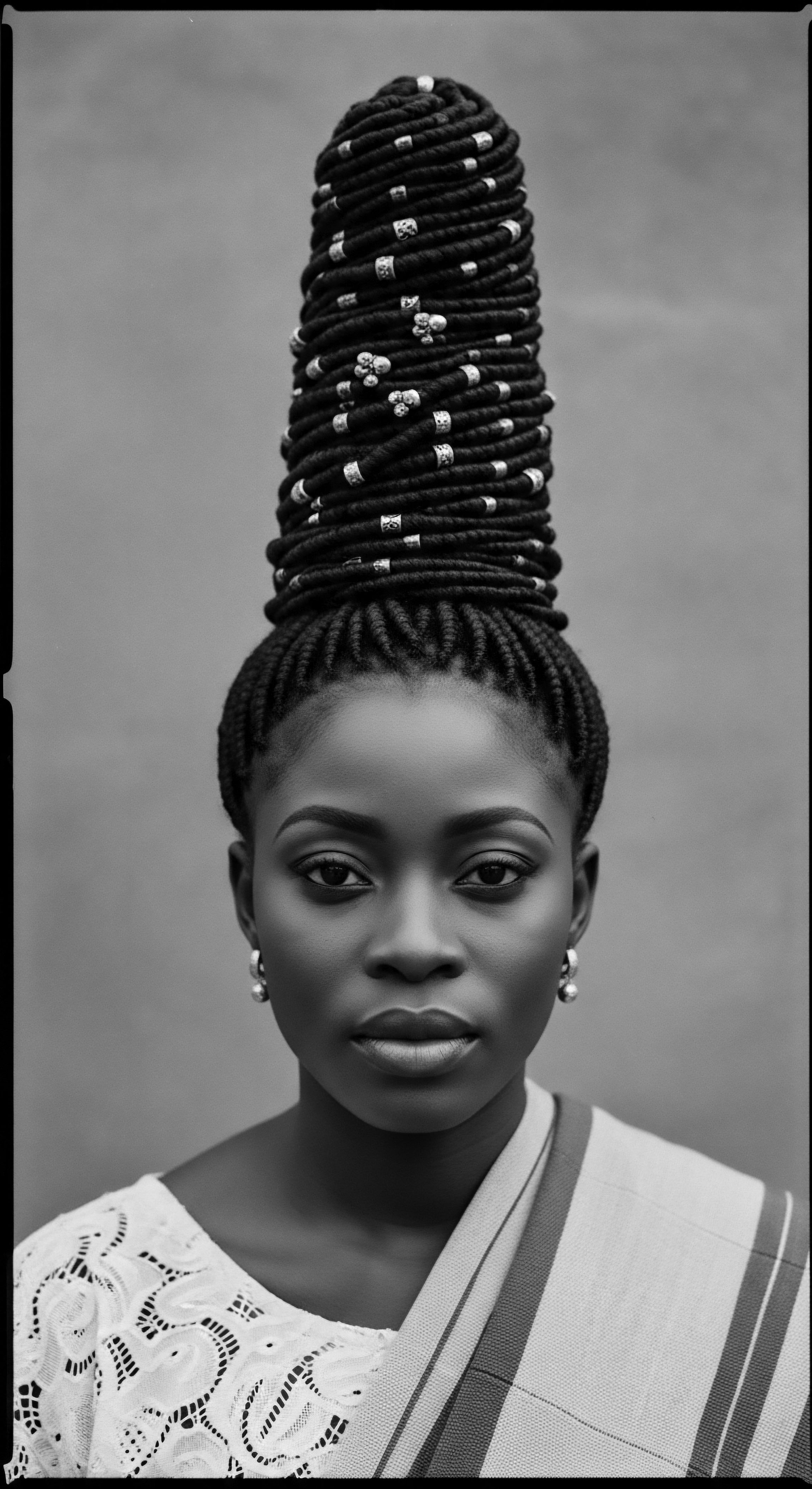
How Do Protective Styles Bear Ancestral Roots?
Protective styling, a cornerstone of textured hair care today, has roots extending back millennia into African civilizations. Cornrows, for example, which are tightly braided rows lying flat against the scalp, have a history dating to around 3000 BCE. In ancient communities, these intricate styles served practical purposes of keeping hair neat and protected from environmental elements, yet also communicated social status, age, marital status, and even tribal affiliation.
During the transatlantic slave trade, the practice of intricate hair styling was forcefully disrupted as enslaved Africans were often shorn of their hair upon arrival, a dehumanizing act aimed at stripping identity and cultural connection. Yet, against this oppressive backdrop, hair became a silent, potent expression of resistance. Enslaved women, particularly rice farmers, braided rice seeds into their hair as a means of survival, preserving both food and culture.
Cornrows were even used to create maps for escape, a covert language hidden in plain sight. The continuity of these styles, adapted with limited resources using basic home ingredients like cooking oil or animal fats, speaks to the profound resilience of these traditions.
Protective hairstyles serve as living testaments to generations of resilience, their forms echoing ancestral ingenuity and defiance.

What Historical Significance Resides in Styling Tools?
The tools used in textured hair care hold historical weight, reflecting ingenuity and adaptation across centuries. In ancient Africa, combs, pins, and razors were crafted to shape and maintain diverse hair textures. These simple yet effective instruments enabled the creation of the complex styles that marked social standing and spiritual connections. With the advent of colonial influence and slavery, traditional tools and methods were often suppressed.
The 19th and 20th centuries saw the introduction of tools such as the metal hot comb, designed to temporarily straighten hair and align it with Eurocentric beauty standards. This tool, while offering new styling possibilities, often caused heat damage. The quest for “good hair,” a term tied to proximity to whiteness, led many to use these methods, even if they compromised hair health. The history of these tools, therefore, reflects a complex interplay between cultural preservation, forced assimilation, and the persistent drive for self-expression.
- Wooden Combs ❉ Ancient tools, often intricately carved, used for detangling, parting, and styling, reflecting communal artistry and the foundational importance of hair preparation.
- Hot Combs/Pressing Combs ❉ Introduced in the late 19th and early 20th centuries, these metal tools heated on stoves or burners aimed to straighten hair, becoming a staple in many Black households.
- Hairpicks/Afro Picks ❉ Gaining prominence during the Civil Rights Movement, these picks with wide teeth symbolized a celebration of natural hair volume and a rejection of imposed beauty norms.

How Have Wigs and Hair Extensions Shaped Heritage Expressions?
The tradition of adorning hair with additions, whether wigs or extensions, is not a modern phenomenon but one with ancient lineage, particularly relevant to the heritage of textured hair. In ancient Egypt, both men and women wore elaborate wigs, signaling status and for protection. The use of hair enhancements in Africa centuries ago was also about conveying identity, wealth, and ceremonial significance.
As populations moved and cultures intermingled, the practice of using extensions adapted. During the periods of slavery and beyond, hair extensions became a means for Black women to achieve varied looks, sometimes aligning with dominant beauty standards or simply offering versatility and protection for their natural hair. This practice allowed individuals to alter their appearance while maintaining a sense of agency over their presentation, even when societal pressures weighed heavily. The continuing popularity of wigs and extensions in the Black community today speaks to their dual role as fashion statements and practical protective solutions, reflecting a long history of adaptability in hair expression.
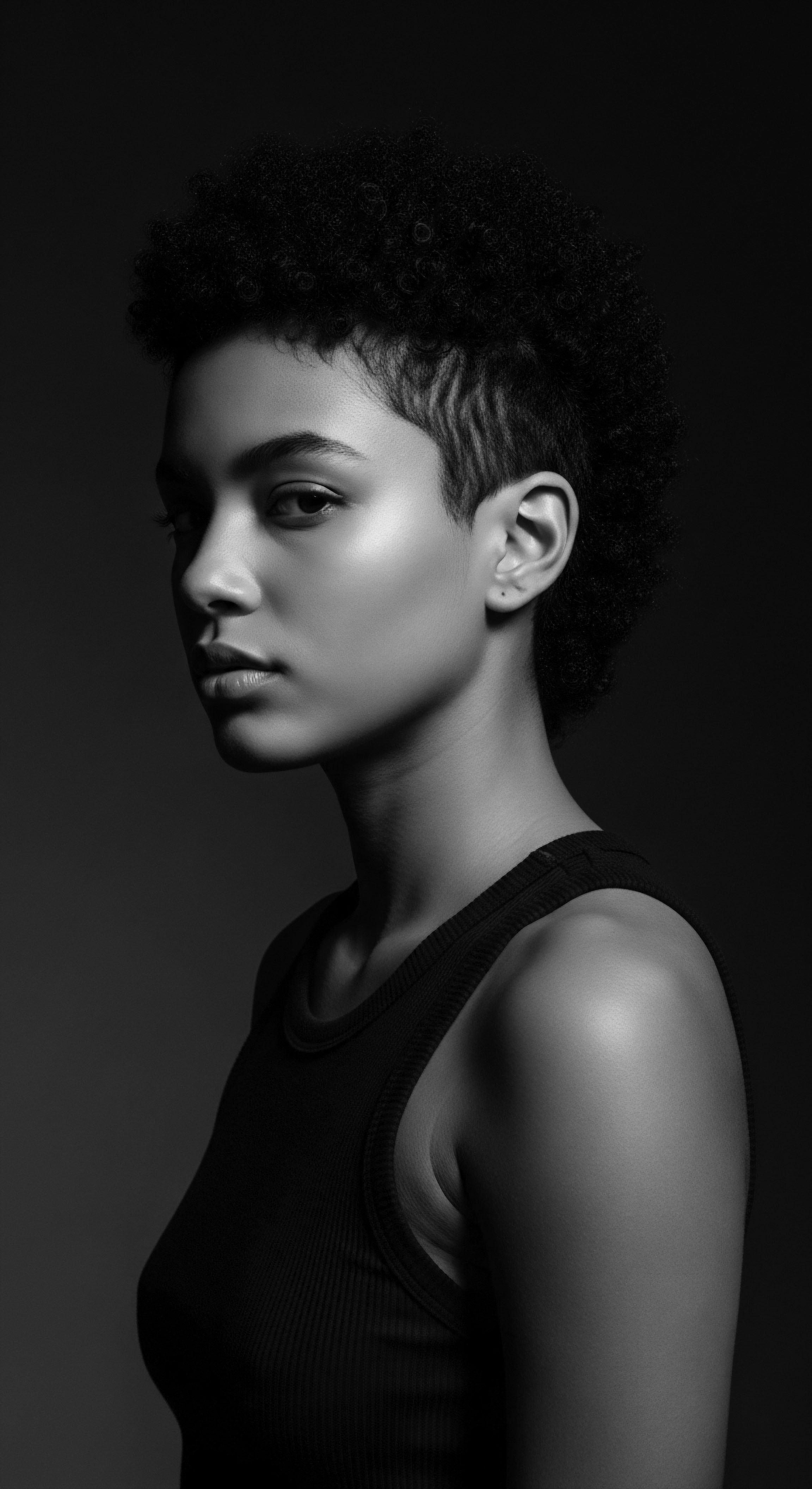
Relay
The journey of textured hair classifications culminates in a contemporary understanding that marries ancestral wisdom with scientific insight, informing holistic care and problem-solving through the lens of heritage. What is the heritage of textured hair classifications informing modern regimens? It manifests in the thoughtful consideration of biological truths alongside enduring cultural practices, creating a continuum of care that honors the past while navigating the present.

How Do Modern Regimens Echo Ancestral Care Philosophies?
Modern textured hair care regimens, while benefiting from scientific advancements, often mirror the core principles found in ancestral practices ❉ moisture, protection, and gentle handling. Textured hair, by its very coiled structure, tends toward dryness because sebum struggles to travel down the curled shaft. Historically, this biological reality was met with rich, natural emollients.
Communities across Africa used butters, herbs, and oils—like shea butter, coconut oil, and aloe vera—to moisturize, protect from environmental elements, and promote hair health. The Himba tribe of Namibia, for example, traditionally uses a mixture of clay and cow fat (otjize) not only as a cultural symbol but also to protect their hair from sun and insects.
Today’s emphasis on hydrating cleansers, deep conditioners, and leave-in products for textured hair directly follows this ancestral logic. The practice of “co-washing,” using a conditioning cleanser without shampoo, minimizes stripping of natural oils, a concept intuitively understood by ancestors who relied on gentler, natural cleansing agents. The recommended washing frequency for textured hair, often weekly or bi-weekly rather than daily, also aligns with the inherent dryness of these hair types and the desire to preserve moisture, a wisdom passed down through generations.
Contemporary hair care, with its emphasis on moisture and protection, stands as a modern echo of ancestral practices.
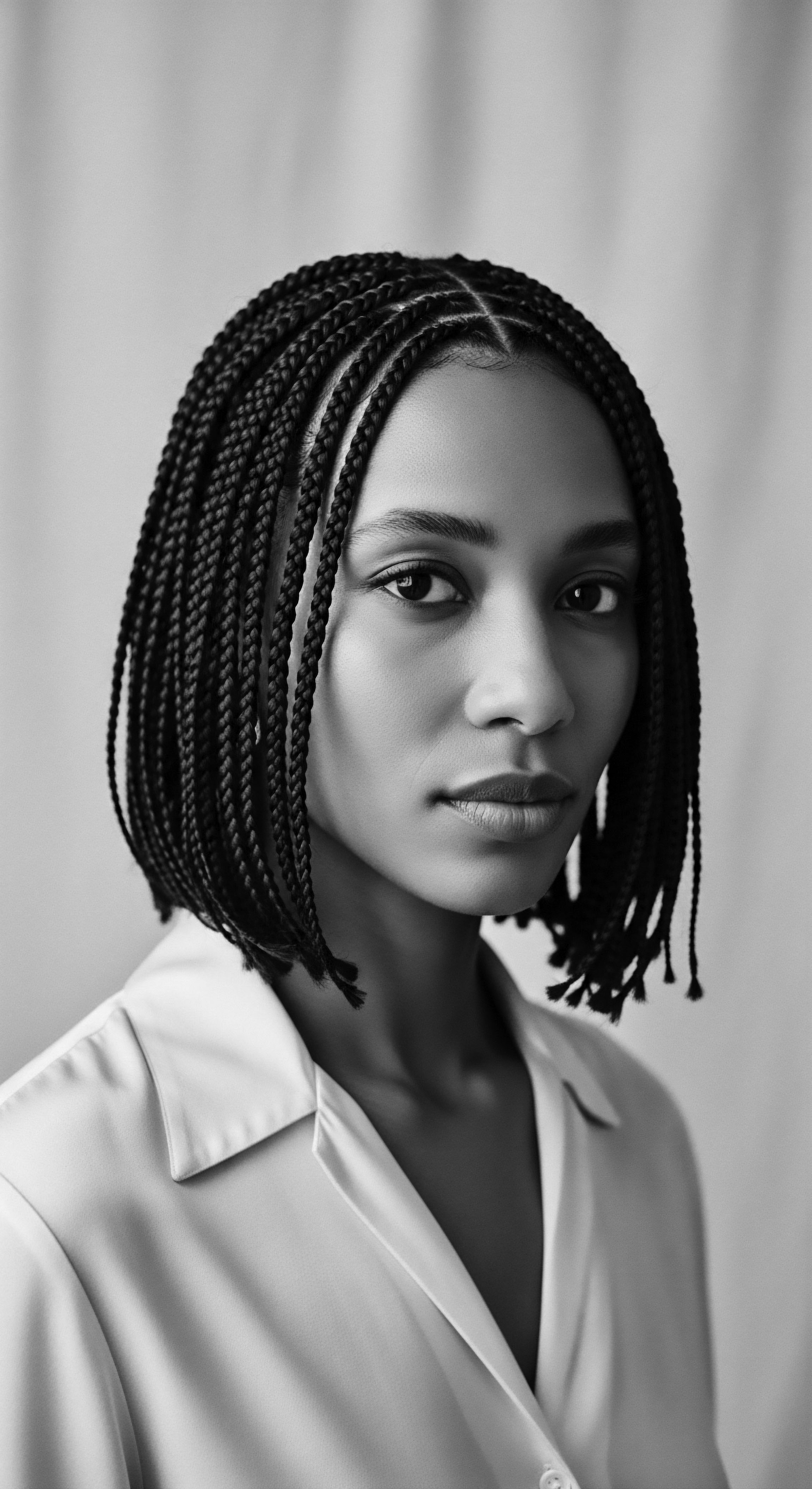
What Nighttime Rituals Speak to Historical Protection?
The act of preparing textured hair for sleep, particularly the use of bonnets and headwraps, carries a deep historical and cultural weight. Headwraps have served as traditional attire in African regions for centuries, symbolizing wealth, ethnicity, marital status, and emotional states. This practice transcended mere aesthetics, offering crucial protection for elaborate hairstyles and maintaining cleanliness.
During enslavement, headwraps and bonnets were weaponized, forced upon Black women to visibly distinguish them as subordinate and to erase their cultural identity. Yet, in an astonishing act of defiance, these very head coverings became tools of resistance. Enslaved women used the folds in their scarves to communicate coded messages and even maps for escape.
Post-slavery, the stigma of servitude clung to bonnets, but Black women reclaimed them, transforming them into symbols of self-expression, cultural pride, and hair preservation. Modern satin or silk bonnets continue this legacy, preventing friction and moisture loss, connecting contemporary care to a heritage of resilience and practical self-preservation.

How Have Ingredients and Solutions Evolved from Ancestral Wisdom?
The journey of ingredients and problem-solving for textured hair is a testament to the continuous search for optimal hair health, bridging ancient remedies with modern scientific understanding. Before the era of mass-produced products, traditional African communities formulated hair treatments from local plants, seeds, and oils. The Chebe powder ritual from Chad, for instance, uses a mixture of cherry seeds, cloves, and Chebe seeds applied to the hair to promote length retention and luster, a practice passed down through generations. This ancestral knowledge, rooted in intimate understanding of natural resources, provided solutions for common hair concerns long before industrial chemistry.
The early 20th century saw pioneering Black entrepreneurs like Madam C.J. Walker develop hair care products specifically for Black women, using ingredients such as petrolatum, coconut oil, beeswax, and sulfur to address scalp issues and promote hair growth. Her work, while sometimes criticized for promoting straightening, also provided much-needed solutions for hair health at a time when products for textured hair were scarce.
Today, the market reflects a renewed appreciation for these natural ingredients, often combining them with scientific insights to create advanced formulations. The current emphasis on avoiding harsh chemicals and sulfates in textured hair products also harks back to an ancestral preference for natural, gentle care that respects the hair’s inherent structure. The solutions to issues like dryness, breakage, and tangling are found in this rich heritage—a blend of ancient wisdom and modern innovation that continues to serve the unique needs of textured hair.
| Ingredient/Category Shea Butter |
| Ancestral Use and Heritage Widely used across West Africa for centuries as a moisturizer and protectant against harsh climates. |
| Modern Application and Benefit A foundational emollient in conditioners, creams, and stylers for deep moisture, reducing breakage. |
| Ingredient/Category Coconut Oil |
| Ancestral Use and Heritage Used traditionally in various African and diasporic communities for moisture and scalp health. |
| Modern Application and Benefit A common pre-poo treatment and sealant to reduce hygral fatigue and add shine. |
| Ingredient/Category Herbs and Botanical Blends (e.g. Chebe) |
| Ancestral Use and Heritage Specific regional blends like Chebe from Chad, used for length retention and hair strength rituals. |
| Modern Application and Benefit Integrated into specialized hair masks, oils, and growth treatments, drawing on their traditional efficacy. |
| Ingredient/Category Clays (e.g. Rhassoul, Bentonite) |
| Ancestral Use and Heritage Used by tribes like the Himba for cleansing, detangling, and protection. |
| Modern Application and Benefit Incorporated into cleansing masks and treatments to remove build-up while imparting minerals. |
| Ingredient/Category The enduring utility of these natural components in textured hair care underscores a continuous dialogue between traditional knowledge and contemporary product development. |
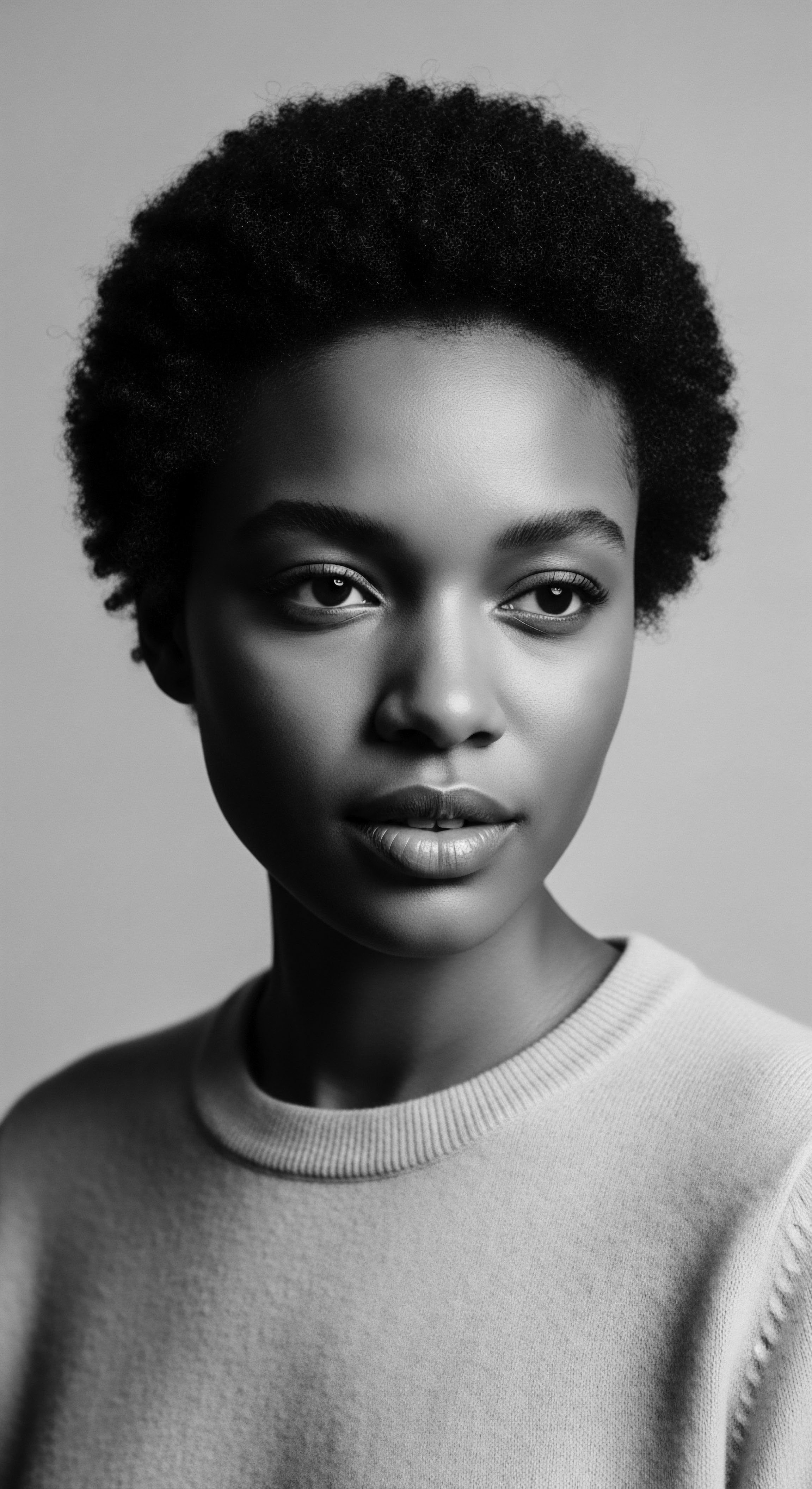
Reflection
The journey through the heritage of textured hair classifications reveals more than a scientific categorization; it uncovers a profound saga of identity, adaptation, and unwavering spirit. From the nuanced understandings of pre-colonial African societies, where hair was a living testament to an individual’s place within the cosmos and community, to the painful distortions imposed by colonial hierarchies, and ultimately, to the reclaimed pride of today’s textured hair movement—each period adds a layer to this complex history. The “Soul of a Strand” echoes through every coil and wave, reminding us that hair is not merely a biological structure. It is a conduit of ancestral wisdom, a canvas for cultural expression, and a beacon of resilience.
The way we name, understand, and care for textured hair today stands as a living library, compiling centuries of knowledge, struggle, and beauty. Each classification, whether ancient or modern, holds a story, inviting us to honor the deep, abiding connection between our hair and our heritage. This legacy compels us to look upon every unique hair pattern as a sacred inheritance, worthy of reverence and informed, soulful care.
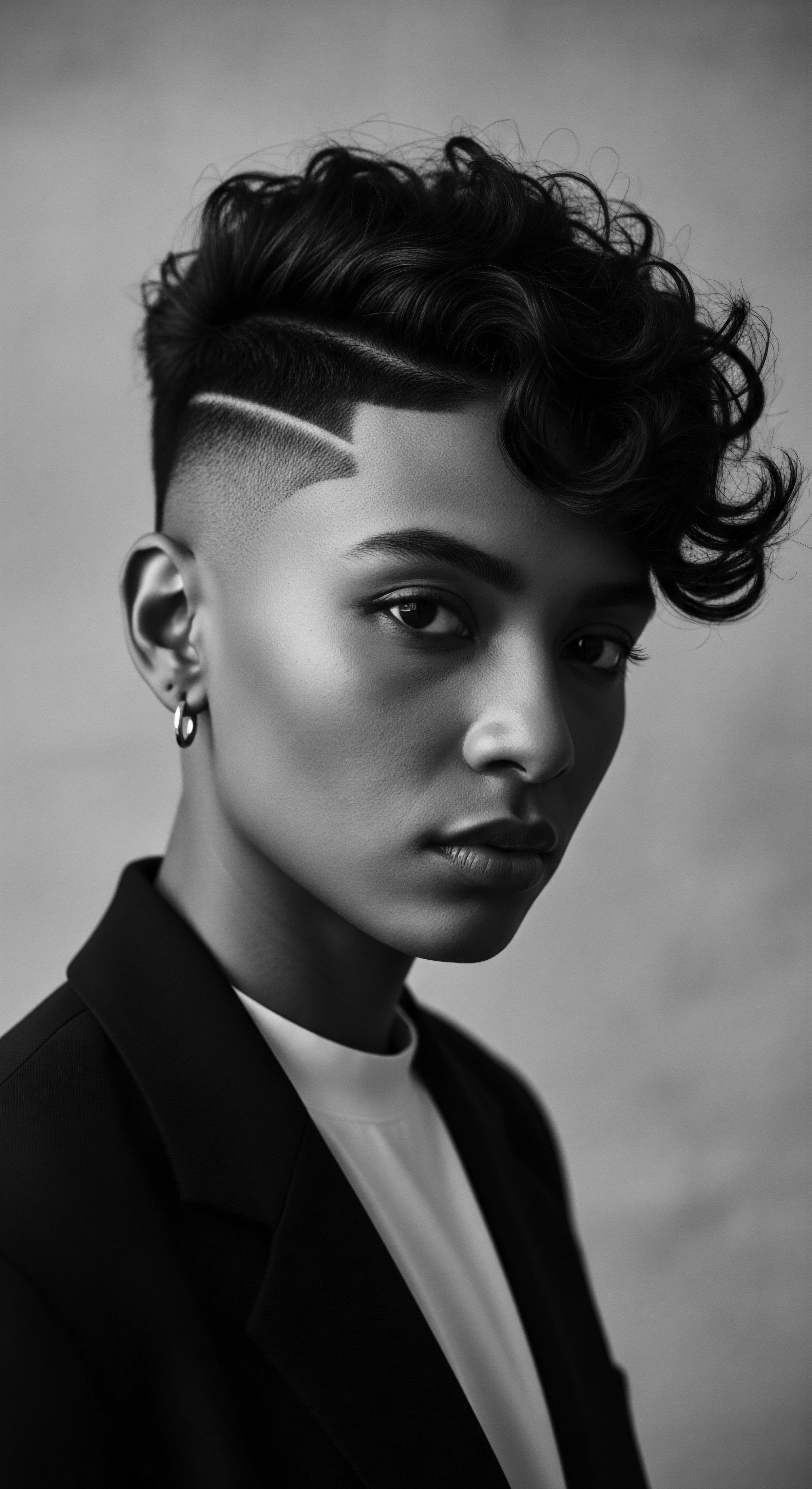
References
- Dabiri, Emma. 2019. Don’t Touch My Hair. HarperCollins.
- Donaldson, Star. 2021. The Controversial History of the Hair Typing System. Byrdie.
- Fischer, Eugen. 1908. Beiträge zur Morphologie und Entwicklungsgeschichte des menschlichen Haares.
- Hrdy, Daniel. 1973. Quantitative Description of Hair Curliness. American Journal of Physical Anthropology, 39(1), 89-94.
- Martin, Rudolf. 1928. Lehrbuch der Anthropologie in systematischer Darstellung. Gustav Fischer Verlag.
- Miyamoto, N. et al. 2021. The Genomic Variation in Textured Hair ❉ Implications in Developing a Holistic Hair Care Routine. MDPI.
- Tharps, Lori L. and Ayana D. Byrd. 2001. Hair Story ❉ Untangling the Roots of Black Hair in America. St. Martin’s Press.
- Walker, Madam C.J. 1914. Madam C. J. Walker’s Wonderful Hair Grower.
- Wade, Peter. 1997. Race and Ethnicity in Latin America. Pluto Press.
